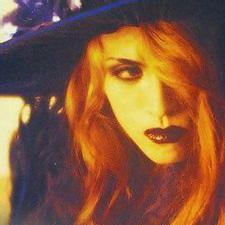-
Content Count
149 -
Joined
-
Last visited
-
Days Won
1
Reputation Activity
-
 薔薇の末裔 got a reaction from Total Saikou in [SOLVED] 'live-distributed' (and other CD-related terms) in japanese
薔薇の末裔 got a reaction from Total Saikou in [SOLVED] 'live-distributed' (and other CD-related terms) in japanese
If it's for cd related terms
無料配布 muryou haifu: free distributed (live or store)
会場限定 kaijou gentei: live limited (usually sold for a price, live distributed releases are usually called just muryou haifu)
配信(限定) haishin (gentei): digital release (only)
初回限定盤 shokai genteiban: first press limited edition
通常盤 tsuujouban: regular edition
会場限定盤 kaijougenteiban: limited edition sold at live venues
通販限定 tsuuhan gentei: mailorder only
完全限定生 kanzen gentei seisan: limited editions that are not going to be reissued (usually limited to a certain number of copies)
先行発売 senkou hatsubai: an item that is sold earlier than the official release date (usually at a special concert)
ファンクラブ限定 fankurabu gentei: fanclub only
予約限定 yoyaku gentei: reservation only
期間限定 kikan gentei: available for a limited period of time
再録 sairoku: re-recorded
リマスター rimasutaa: remastered
オリジナル特典 orijinaru tokuten: original bonus item (like comment DVDs or free goods for buying at a certain store)
This is all I could think of but please let me know if you need more.
-
 薔薇の末裔 got a reaction from Total Saikou in Sexuality matters within VK
薔薇の末裔 got a reaction from Total Saikou in Sexuality matters within VK
It might sound weird from a western perspective, but visual kei is like the straightest and most homophobic music scene in Japan. We tend to look at visual kei with western eyes and mix its cultural aspects with things that belong to the western culture. Fanservice and provocations used for shock value put aside, the androgynous aesthetics of visual kei band rarely expressed anything related to gender identity and especially sexual orientation.
After all, it started with people like X Japan who admittedly were inspired by glam rock bands and way of life, which I would find hard to connect to sexual orientation. Visual kei early bandomen were mostly chinpiras, bosozokus (bikers) and the likes. They really incarnated the somewhat glamrock aesthetic of riding bikes getting drunk, banging girls, etc. Of course X had their own decadent/romantic taste that made them different, and a lot of influences changed the scene over time. However, visual kei is still remains 99% driven by social outcasts looking for pussy and very rarely by something else.
In Japan we also have onnagatas, who are kabuki actors specialized in female roles that are again 99% straight. Bandoman with feminine looks call themselves onnagata, not josou (crossdresser), implying that the cultural source behind their looks is not connected with crossdressing but just playing a female role in a band, but again this something that might be hard to completely understand it taken outside of Japanese culture. For example Izam, the king of all onnagatas, married more than once and has more tha one child, and outside of his role in Shazna he rarely did anything ambiguous, just like the kabuki onnagatas out of stage. Both media and fans are everything but respectful of privacy, but I've rarely seen Japanese articles or message board questioning bandomen sexual orientation. That's because the number 1 reason people do visual kei is because the girls like it (well, liked it, I am not sure this is the trend with young girls anymore).
Soft Ballet/Ken Morioka are closer to Soft Cell/Marc Almond so I would not even count them as visual kei even though they had some influence on it. And of course, there are exceptions as you mentioned. The chinpira bandomen of the 90's almost extincted and younger generations bandomans are usually anime/game otakus. They grew up with different influences and values, and it would make sense if the current incarnation of visual kei instinctively appealed to more people with sexual orientation/gender identity concerns, especially after Japan started talking about these issues in a less obsolete viewpoint.
-
 薔薇の末裔 got a reaction from Miku70 in Sexuality matters within VK
薔薇の末裔 got a reaction from Miku70 in Sexuality matters within VK
Make up boys are a recent trend in Japan, a lot of popular instagram/youtube guys are wearing (mostly minimal) make up and even doing tutorial for other boys but they 90% appeal to girls. In the US/Europe everyone would probably think you are gay but there is no such connotation in Japan. After all people who shave/trim their eyebrow/dye or perm their hair were considered gay in the western culture until few years ago but have been absolutely normal things for a straight guy in Japan for at leas 20 years. Weird hair color is a different issue, most people will look at you as weird or someone who hasn't a serious job, etc.
-
 薔薇の末裔 got a reaction from Wakarimashita in Sexuality matters within VK
薔薇の末裔 got a reaction from Wakarimashita in Sexuality matters within VK
Make up boys are a recent trend in Japan, a lot of popular instagram/youtube guys are wearing (mostly minimal) make up and even doing tutorial for other boys but they 90% appeal to girls. In the US/Europe everyone would probably think you are gay but there is no such connotation in Japan. After all people who shave/trim their eyebrow/dye or perm their hair were considered gay in the western culture until few years ago but have been absolutely normal things for a straight guy in Japan for at leas 20 years. Weird hair color is a different issue, most people will look at you as weird or someone who hasn't a serious job, etc.
-
 薔薇の末裔 got a reaction from NICKT in Sexuality matters within VK
薔薇の末裔 got a reaction from NICKT in Sexuality matters within VK
It might sound weird from a western perspective, but visual kei is like the straightest and most homophobic music scene in Japan. We tend to look at visual kei with western eyes and mix its cultural aspects with things that belong to the western culture. Fanservice and provocations used for shock value put aside, the androgynous aesthetics of visual kei band rarely expressed anything related to gender identity and especially sexual orientation.
After all, it started with people like X Japan who admittedly were inspired by glam rock bands and way of life, which I would find hard to connect to sexual orientation. Visual kei early bandomen were mostly chinpiras, bosozokus (bikers) and the likes. They really incarnated the somewhat glamrock aesthetic of riding bikes getting drunk, banging girls, etc. Of course X had their own decadent/romantic taste that made them different, and a lot of influences changed the scene over time. However, visual kei is still remains 99% driven by social outcasts looking for pussy and very rarely by something else.
In Japan we also have onnagatas, who are kabuki actors specialized in female roles that are again 99% straight. Bandoman with feminine looks call themselves onnagata, not josou (crossdresser), implying that the cultural source behind their looks is not connected with crossdressing but just playing a female role in a band, but again this something that might be hard to completely understand it taken outside of Japanese culture. For example Izam, the king of all onnagatas, married more than once and has more tha one child, and outside of his role in Shazna he rarely did anything ambiguous, just like the kabuki onnagatas out of stage. Both media and fans are everything but respectful of privacy, but I've rarely seen Japanese articles or message board questioning bandomen sexual orientation. That's because the number 1 reason people do visual kei is because the girls like it (well, liked it, I am not sure this is the trend with young girls anymore).
Soft Ballet/Ken Morioka are closer to Soft Cell/Marc Almond so I would not even count them as visual kei even though they had some influence on it. And of course, there are exceptions as you mentioned. The chinpira bandomen of the 90's almost extincted and younger generations bandomans are usually anime/game otakus. They grew up with different influences and values, and it would make sense if the current incarnation of visual kei instinctively appealed to more people with sexual orientation/gender identity concerns, especially after Japan started talking about these issues in a less obsolete viewpoint.
-
 薔薇の末裔 got a reaction from raspberrynilla in Sexuality matters within VK
薔薇の末裔 got a reaction from raspberrynilla in Sexuality matters within VK
It might sound weird from a western perspective, but visual kei is like the straightest and most homophobic music scene in Japan. We tend to look at visual kei with western eyes and mix its cultural aspects with things that belong to the western culture. Fanservice and provocations used for shock value put aside, the androgynous aesthetics of visual kei band rarely expressed anything related to gender identity and especially sexual orientation.
After all, it started with people like X Japan who admittedly were inspired by glam rock bands and way of life, which I would find hard to connect to sexual orientation. Visual kei early bandomen were mostly chinpiras, bosozokus (bikers) and the likes. They really incarnated the somewhat glamrock aesthetic of riding bikes getting drunk, banging girls, etc. Of course X had their own decadent/romantic taste that made them different, and a lot of influences changed the scene over time. However, visual kei is still remains 99% driven by social outcasts looking for pussy and very rarely by something else.
In Japan we also have onnagatas, who are kabuki actors specialized in female roles that are again 99% straight. Bandoman with feminine looks call themselves onnagata, not josou (crossdresser), implying that the cultural source behind their looks is not connected with crossdressing but just playing a female role in a band, but again this something that might be hard to completely understand it taken outside of Japanese culture. For example Izam, the king of all onnagatas, married more than once and has more tha one child, and outside of his role in Shazna he rarely did anything ambiguous, just like the kabuki onnagatas out of stage. Both media and fans are everything but respectful of privacy, but I've rarely seen Japanese articles or message board questioning bandomen sexual orientation. That's because the number 1 reason people do visual kei is because the girls like it (well, liked it, I am not sure this is the trend with young girls anymore).
Soft Ballet/Ken Morioka are closer to Soft Cell/Marc Almond so I would not even count them as visual kei even though they had some influence on it. And of course, there are exceptions as you mentioned. The chinpira bandomen of the 90's almost extincted and younger generations bandomans are usually anime/game otakus. They grew up with different influences and values, and it would make sense if the current incarnation of visual kei instinctively appealed to more people with sexual orientation/gender identity concerns, especially after Japan started talking about these issues in a less obsolete viewpoint.
-
 薔薇の末裔 got a reaction from gret in Sexuality matters within VK
薔薇の末裔 got a reaction from gret in Sexuality matters within VK
It might sound weird from a western perspective, but visual kei is like the straightest and most homophobic music scene in Japan. We tend to look at visual kei with western eyes and mix its cultural aspects with things that belong to the western culture. Fanservice and provocations used for shock value put aside, the androgynous aesthetics of visual kei band rarely expressed anything related to gender identity and especially sexual orientation.
After all, it started with people like X Japan who admittedly were inspired by glam rock bands and way of life, which I would find hard to connect to sexual orientation. Visual kei early bandomen were mostly chinpiras, bosozokus (bikers) and the likes. They really incarnated the somewhat glamrock aesthetic of riding bikes getting drunk, banging girls, etc. Of course X had their own decadent/romantic taste that made them different, and a lot of influences changed the scene over time. However, visual kei is still remains 99% driven by social outcasts looking for pussy and very rarely by something else.
In Japan we also have onnagatas, who are kabuki actors specialized in female roles that are again 99% straight. Bandoman with feminine looks call themselves onnagata, not josou (crossdresser), implying that the cultural source behind their looks is not connected with crossdressing but just playing a female role in a band, but again this something that might be hard to completely understand it taken outside of Japanese culture. For example Izam, the king of all onnagatas, married more than once and has more tha one child, and outside of his role in Shazna he rarely did anything ambiguous, just like the kabuki onnagatas out of stage. Both media and fans are everything but respectful of privacy, but I've rarely seen Japanese articles or message board questioning bandomen sexual orientation. That's because the number 1 reason people do visual kei is because the girls like it (well, liked it, I am not sure this is the trend with young girls anymore).
Soft Ballet/Ken Morioka are closer to Soft Cell/Marc Almond so I would not even count them as visual kei even though they had some influence on it. And of course, there are exceptions as you mentioned. The chinpira bandomen of the 90's almost extincted and younger generations bandomans are usually anime/game otakus. They grew up with different influences and values, and it would make sense if the current incarnation of visual kei instinctively appealed to more people with sexual orientation/gender identity concerns, especially after Japan started talking about these issues in a less obsolete viewpoint.
-
 薔薇の末裔 got a reaction from Laurence02 in Sexuality matters within VK
薔薇の末裔 got a reaction from Laurence02 in Sexuality matters within VK
It might sound weird from a western perspective, but visual kei is like the straightest and most homophobic music scene in Japan. We tend to look at visual kei with western eyes and mix its cultural aspects with things that belong to the western culture. Fanservice and provocations used for shock value put aside, the androgynous aesthetics of visual kei band rarely expressed anything related to gender identity and especially sexual orientation.
After all, it started with people like X Japan who admittedly were inspired by glam rock bands and way of life, which I would find hard to connect to sexual orientation. Visual kei early bandomen were mostly chinpiras, bosozokus (bikers) and the likes. They really incarnated the somewhat glamrock aesthetic of riding bikes getting drunk, banging girls, etc. Of course X had their own decadent/romantic taste that made them different, and a lot of influences changed the scene over time. However, visual kei is still remains 99% driven by social outcasts looking for pussy and very rarely by something else.
In Japan we also have onnagatas, who are kabuki actors specialized in female roles that are again 99% straight. Bandoman with feminine looks call themselves onnagata, not josou (crossdresser), implying that the cultural source behind their looks is not connected with crossdressing but just playing a female role in a band, but again this something that might be hard to completely understand it taken outside of Japanese culture. For example Izam, the king of all onnagatas, married more than once and has more tha one child, and outside of his role in Shazna he rarely did anything ambiguous, just like the kabuki onnagatas out of stage. Both media and fans are everything but respectful of privacy, but I've rarely seen Japanese articles or message board questioning bandomen sexual orientation. That's because the number 1 reason people do visual kei is because the girls like it (well, liked it, I am not sure this is the trend with young girls anymore).
Soft Ballet/Ken Morioka are closer to Soft Cell/Marc Almond so I would not even count them as visual kei even though they had some influence on it. And of course, there are exceptions as you mentioned. The chinpira bandomen of the 90's almost extincted and younger generations bandomans are usually anime/game otakus. They grew up with different influences and values, and it would make sense if the current incarnation of visual kei instinctively appealed to more people with sexual orientation/gender identity concerns, especially after Japan started talking about these issues in a less obsolete viewpoint.
-
 薔薇の末裔 got a reaction from hyura in Sexuality matters within VK
薔薇の末裔 got a reaction from hyura in Sexuality matters within VK
It might sound weird from a western perspective, but visual kei is like the straightest and most homophobic music scene in Japan. We tend to look at visual kei with western eyes and mix its cultural aspects with things that belong to the western culture. Fanservice and provocations used for shock value put aside, the androgynous aesthetics of visual kei band rarely expressed anything related to gender identity and especially sexual orientation.
After all, it started with people like X Japan who admittedly were inspired by glam rock bands and way of life, which I would find hard to connect to sexual orientation. Visual kei early bandomen were mostly chinpiras, bosozokus (bikers) and the likes. They really incarnated the somewhat glamrock aesthetic of riding bikes getting drunk, banging girls, etc. Of course X had their own decadent/romantic taste that made them different, and a lot of influences changed the scene over time. However, visual kei is still remains 99% driven by social outcasts looking for pussy and very rarely by something else.
In Japan we also have onnagatas, who are kabuki actors specialized in female roles that are again 99% straight. Bandoman with feminine looks call themselves onnagata, not josou (crossdresser), implying that the cultural source behind their looks is not connected with crossdressing but just playing a female role in a band, but again this something that might be hard to completely understand it taken outside of Japanese culture. For example Izam, the king of all onnagatas, married more than once and has more tha one child, and outside of his role in Shazna he rarely did anything ambiguous, just like the kabuki onnagatas out of stage. Both media and fans are everything but respectful of privacy, but I've rarely seen Japanese articles or message board questioning bandomen sexual orientation. That's because the number 1 reason people do visual kei is because the girls like it (well, liked it, I am not sure this is the trend with young girls anymore).
Soft Ballet/Ken Morioka are closer to Soft Cell/Marc Almond so I would not even count them as visual kei even though they had some influence on it. And of course, there are exceptions as you mentioned. The chinpira bandomen of the 90's almost extincted and younger generations bandomans are usually anime/game otakus. They grew up with different influences and values, and it would make sense if the current incarnation of visual kei instinctively appealed to more people with sexual orientation/gender identity concerns, especially after Japan started talking about these issues in a less obsolete viewpoint.
-
 薔薇の末裔 got a reaction from Saga in Sexuality matters within VK
薔薇の末裔 got a reaction from Saga in Sexuality matters within VK
It might sound weird from a western perspective, but visual kei is like the straightest and most homophobic music scene in Japan. We tend to look at visual kei with western eyes and mix its cultural aspects with things that belong to the western culture. Fanservice and provocations used for shock value put aside, the androgynous aesthetics of visual kei band rarely expressed anything related to gender identity and especially sexual orientation.
After all, it started with people like X Japan who admittedly were inspired by glam rock bands and way of life, which I would find hard to connect to sexual orientation. Visual kei early bandomen were mostly chinpiras, bosozokus (bikers) and the likes. They really incarnated the somewhat glamrock aesthetic of riding bikes getting drunk, banging girls, etc. Of course X had their own decadent/romantic taste that made them different, and a lot of influences changed the scene over time. However, visual kei is still remains 99% driven by social outcasts looking for pussy and very rarely by something else.
In Japan we also have onnagatas, who are kabuki actors specialized in female roles that are again 99% straight. Bandoman with feminine looks call themselves onnagata, not josou (crossdresser), implying that the cultural source behind their looks is not connected with crossdressing but just playing a female role in a band, but again this something that might be hard to completely understand it taken outside of Japanese culture. For example Izam, the king of all onnagatas, married more than once and has more tha one child, and outside of his role in Shazna he rarely did anything ambiguous, just like the kabuki onnagatas out of stage. Both media and fans are everything but respectful of privacy, but I've rarely seen Japanese articles or message board questioning bandomen sexual orientation. That's because the number 1 reason people do visual kei is because the girls like it (well, liked it, I am not sure this is the trend with young girls anymore).
Soft Ballet/Ken Morioka are closer to Soft Cell/Marc Almond so I would not even count them as visual kei even though they had some influence on it. And of course, there are exceptions as you mentioned. The chinpira bandomen of the 90's almost extincted and younger generations bandomans are usually anime/game otakus. They grew up with different influences and values, and it would make sense if the current incarnation of visual kei instinctively appealed to more people with sexual orientation/gender identity concerns, especially after Japan started talking about these issues in a less obsolete viewpoint.
-
 薔薇の末裔 got a reaction from GreatNorthernVK in Sexuality matters within VK
薔薇の末裔 got a reaction from GreatNorthernVK in Sexuality matters within VK
It might sound weird from a western perspective, but visual kei is like the straightest and most homophobic music scene in Japan. We tend to look at visual kei with western eyes and mix its cultural aspects with things that belong to the western culture. Fanservice and provocations used for shock value put aside, the androgynous aesthetics of visual kei band rarely expressed anything related to gender identity and especially sexual orientation.
After all, it started with people like X Japan who admittedly were inspired by glam rock bands and way of life, which I would find hard to connect to sexual orientation. Visual kei early bandomen were mostly chinpiras, bosozokus (bikers) and the likes. They really incarnated the somewhat glamrock aesthetic of riding bikes getting drunk, banging girls, etc. Of course X had their own decadent/romantic taste that made them different, and a lot of influences changed the scene over time. However, visual kei is still remains 99% driven by social outcasts looking for pussy and very rarely by something else.
In Japan we also have onnagatas, who are kabuki actors specialized in female roles that are again 99% straight. Bandoman with feminine looks call themselves onnagata, not josou (crossdresser), implying that the cultural source behind their looks is not connected with crossdressing but just playing a female role in a band, but again this something that might be hard to completely understand it taken outside of Japanese culture. For example Izam, the king of all onnagatas, married more than once and has more tha one child, and outside of his role in Shazna he rarely did anything ambiguous, just like the kabuki onnagatas out of stage. Both media and fans are everything but respectful of privacy, but I've rarely seen Japanese articles or message board questioning bandomen sexual orientation. That's because the number 1 reason people do visual kei is because the girls like it (well, liked it, I am not sure this is the trend with young girls anymore).
Soft Ballet/Ken Morioka are closer to Soft Cell/Marc Almond so I would not even count them as visual kei even though they had some influence on it. And of course, there are exceptions as you mentioned. The chinpira bandomen of the 90's almost extincted and younger generations bandomans are usually anime/game otakus. They grew up with different influences and values, and it would make sense if the current incarnation of visual kei instinctively appealed to more people with sexual orientation/gender identity concerns, especially after Japan started talking about these issues in a less obsolete viewpoint.
-
 薔薇の末裔 got a reaction from suji in Sexuality matters within VK
薔薇の末裔 got a reaction from suji in Sexuality matters within VK
It might sound weird from a western perspective, but visual kei is like the straightest and most homophobic music scene in Japan. We tend to look at visual kei with western eyes and mix its cultural aspects with things that belong to the western culture. Fanservice and provocations used for shock value put aside, the androgynous aesthetics of visual kei band rarely expressed anything related to gender identity and especially sexual orientation.
After all, it started with people like X Japan who admittedly were inspired by glam rock bands and way of life, which I would find hard to connect to sexual orientation. Visual kei early bandomen were mostly chinpiras, bosozokus (bikers) and the likes. They really incarnated the somewhat glamrock aesthetic of riding bikes getting drunk, banging girls, etc. Of course X had their own decadent/romantic taste that made them different, and a lot of influences changed the scene over time. However, visual kei is still remains 99% driven by social outcasts looking for pussy and very rarely by something else.
In Japan we also have onnagatas, who are kabuki actors specialized in female roles that are again 99% straight. Bandoman with feminine looks call themselves onnagata, not josou (crossdresser), implying that the cultural source behind their looks is not connected with crossdressing but just playing a female role in a band, but again this something that might be hard to completely understand it taken outside of Japanese culture. For example Izam, the king of all onnagatas, married more than once and has more tha one child, and outside of his role in Shazna he rarely did anything ambiguous, just like the kabuki onnagatas out of stage. Both media and fans are everything but respectful of privacy, but I've rarely seen Japanese articles or message board questioning bandomen sexual orientation. That's because the number 1 reason people do visual kei is because the girls like it (well, liked it, I am not sure this is the trend with young girls anymore).
Soft Ballet/Ken Morioka are closer to Soft Cell/Marc Almond so I would not even count them as visual kei even though they had some influence on it. And of course, there are exceptions as you mentioned. The chinpira bandomen of the 90's almost extincted and younger generations bandomans are usually anime/game otakus. They grew up with different influences and values, and it would make sense if the current incarnation of visual kei instinctively appealed to more people with sexual orientation/gender identity concerns, especially after Japan started talking about these issues in a less obsolete viewpoint.
-
 薔薇の末裔 got a reaction from CAT5 in Sexuality matters within VK
薔薇の末裔 got a reaction from CAT5 in Sexuality matters within VK
It might sound weird from a western perspective, but visual kei is like the straightest and most homophobic music scene in Japan. We tend to look at visual kei with western eyes and mix its cultural aspects with things that belong to the western culture. Fanservice and provocations used for shock value put aside, the androgynous aesthetics of visual kei band rarely expressed anything related to gender identity and especially sexual orientation.
After all, it started with people like X Japan who admittedly were inspired by glam rock bands and way of life, which I would find hard to connect to sexual orientation. Visual kei early bandomen were mostly chinpiras, bosozokus (bikers) and the likes. They really incarnated the somewhat glamrock aesthetic of riding bikes getting drunk, banging girls, etc. Of course X had their own decadent/romantic taste that made them different, and a lot of influences changed the scene over time. However, visual kei is still remains 99% driven by social outcasts looking for pussy and very rarely by something else.
In Japan we also have onnagatas, who are kabuki actors specialized in female roles that are again 99% straight. Bandoman with feminine looks call themselves onnagata, not josou (crossdresser), implying that the cultural source behind their looks is not connected with crossdressing but just playing a female role in a band, but again this something that might be hard to completely understand it taken outside of Japanese culture. For example Izam, the king of all onnagatas, married more than once and has more tha one child, and outside of his role in Shazna he rarely did anything ambiguous, just like the kabuki onnagatas out of stage. Both media and fans are everything but respectful of privacy, but I've rarely seen Japanese articles or message board questioning bandomen sexual orientation. That's because the number 1 reason people do visual kei is because the girls like it (well, liked it, I am not sure this is the trend with young girls anymore).
Soft Ballet/Ken Morioka are closer to Soft Cell/Marc Almond so I would not even count them as visual kei even though they had some influence on it. And of course, there are exceptions as you mentioned. The chinpira bandomen of the 90's almost extincted and younger generations bandomans are usually anime/game otakus. They grew up with different influences and values, and it would make sense if the current incarnation of visual kei instinctively appealed to more people with sexual orientation/gender identity concerns, especially after Japan started talking about these issues in a less obsolete viewpoint.
-
 薔薇の末裔 got a reaction from Takadanobabaalien in Sexuality matters within VK
薔薇の末裔 got a reaction from Takadanobabaalien in Sexuality matters within VK
It might sound weird from a western perspective, but visual kei is like the straightest and most homophobic music scene in Japan. We tend to look at visual kei with western eyes and mix its cultural aspects with things that belong to the western culture. Fanservice and provocations used for shock value put aside, the androgynous aesthetics of visual kei band rarely expressed anything related to gender identity and especially sexual orientation.
After all, it started with people like X Japan who admittedly were inspired by glam rock bands and way of life, which I would find hard to connect to sexual orientation. Visual kei early bandomen were mostly chinpiras, bosozokus (bikers) and the likes. They really incarnated the somewhat glamrock aesthetic of riding bikes getting drunk, banging girls, etc. Of course X had their own decadent/romantic taste that made them different, and a lot of influences changed the scene over time. However, visual kei is still remains 99% driven by social outcasts looking for pussy and very rarely by something else.
In Japan we also have onnagatas, who are kabuki actors specialized in female roles that are again 99% straight. Bandoman with feminine looks call themselves onnagata, not josou (crossdresser), implying that the cultural source behind their looks is not connected with crossdressing but just playing a female role in a band, but again this something that might be hard to completely understand it taken outside of Japanese culture. For example Izam, the king of all onnagatas, married more than once and has more tha one child, and outside of his role in Shazna he rarely did anything ambiguous, just like the kabuki onnagatas out of stage. Both media and fans are everything but respectful of privacy, but I've rarely seen Japanese articles or message board questioning bandomen sexual orientation. That's because the number 1 reason people do visual kei is because the girls like it (well, liked it, I am not sure this is the trend with young girls anymore).
Soft Ballet/Ken Morioka are closer to Soft Cell/Marc Almond so I would not even count them as visual kei even though they had some influence on it. And of course, there are exceptions as you mentioned. The chinpira bandomen of the 90's almost extincted and younger generations bandomans are usually anime/game otakus. They grew up with different influences and values, and it would make sense if the current incarnation of visual kei instinctively appealed to more people with sexual orientation/gender identity concerns, especially after Japan started talking about these issues in a less obsolete viewpoint.
-
 薔薇の末裔 got a reaction from saiko in Sexuality matters within VK
薔薇の末裔 got a reaction from saiko in Sexuality matters within VK
It might sound weird from a western perspective, but visual kei is like the straightest and most homophobic music scene in Japan. We tend to look at visual kei with western eyes and mix its cultural aspects with things that belong to the western culture. Fanservice and provocations used for shock value put aside, the androgynous aesthetics of visual kei band rarely expressed anything related to gender identity and especially sexual orientation.
After all, it started with people like X Japan who admittedly were inspired by glam rock bands and way of life, which I would find hard to connect to sexual orientation. Visual kei early bandomen were mostly chinpiras, bosozokus (bikers) and the likes. They really incarnated the somewhat glamrock aesthetic of riding bikes getting drunk, banging girls, etc. Of course X had their own decadent/romantic taste that made them different, and a lot of influences changed the scene over time. However, visual kei is still remains 99% driven by social outcasts looking for pussy and very rarely by something else.
In Japan we also have onnagatas, who are kabuki actors specialized in female roles that are again 99% straight. Bandoman with feminine looks call themselves onnagata, not josou (crossdresser), implying that the cultural source behind their looks is not connected with crossdressing but just playing a female role in a band, but again this something that might be hard to completely understand it taken outside of Japanese culture. For example Izam, the king of all onnagatas, married more than once and has more tha one child, and outside of his role in Shazna he rarely did anything ambiguous, just like the kabuki onnagatas out of stage. Both media and fans are everything but respectful of privacy, but I've rarely seen Japanese articles or message board questioning bandomen sexual orientation. That's because the number 1 reason people do visual kei is because the girls like it (well, liked it, I am not sure this is the trend with young girls anymore).
Soft Ballet/Ken Morioka are closer to Soft Cell/Marc Almond so I would not even count them as visual kei even though they had some influence on it. And of course, there are exceptions as you mentioned. The chinpira bandomen of the 90's almost extincted and younger generations bandomans are usually anime/game otakus. They grew up with different influences and values, and it would make sense if the current incarnation of visual kei instinctively appealed to more people with sexual orientation/gender identity concerns, especially after Japan started talking about these issues in a less obsolete viewpoint.
-
 薔薇の末裔 got a reaction from VESSMIER in Sexuality matters within VK
薔薇の末裔 got a reaction from VESSMIER in Sexuality matters within VK
It might sound weird from a western perspective, but visual kei is like the straightest and most homophobic music scene in Japan. We tend to look at visual kei with western eyes and mix its cultural aspects with things that belong to the western culture. Fanservice and provocations used for shock value put aside, the androgynous aesthetics of visual kei band rarely expressed anything related to gender identity and especially sexual orientation.
After all, it started with people like X Japan who admittedly were inspired by glam rock bands and way of life, which I would find hard to connect to sexual orientation. Visual kei early bandomen were mostly chinpiras, bosozokus (bikers) and the likes. They really incarnated the somewhat glamrock aesthetic of riding bikes getting drunk, banging girls, etc. Of course X had their own decadent/romantic taste that made them different, and a lot of influences changed the scene over time. However, visual kei is still remains 99% driven by social outcasts looking for pussy and very rarely by something else.
In Japan we also have onnagatas, who are kabuki actors specialized in female roles that are again 99% straight. Bandoman with feminine looks call themselves onnagata, not josou (crossdresser), implying that the cultural source behind their looks is not connected with crossdressing but just playing a female role in a band, but again this something that might be hard to completely understand it taken outside of Japanese culture. For example Izam, the king of all onnagatas, married more than once and has more tha one child, and outside of his role in Shazna he rarely did anything ambiguous, just like the kabuki onnagatas out of stage. Both media and fans are everything but respectful of privacy, but I've rarely seen Japanese articles or message board questioning bandomen sexual orientation. That's because the number 1 reason people do visual kei is because the girls like it (well, liked it, I am not sure this is the trend with young girls anymore).
Soft Ballet/Ken Morioka are closer to Soft Cell/Marc Almond so I would not even count them as visual kei even though they had some influence on it. And of course, there are exceptions as you mentioned. The chinpira bandomen of the 90's almost extincted and younger generations bandomans are usually anime/game otakus. They grew up with different influences and values, and it would make sense if the current incarnation of visual kei instinctively appealed to more people with sexual orientation/gender identity concerns, especially after Japan started talking about these issues in a less obsolete viewpoint.
-
 薔薇の末裔 got a reaction from Miku70 in Sexuality matters within VK
薔薇の末裔 got a reaction from Miku70 in Sexuality matters within VK
It might sound weird from a western perspective, but visual kei is like the straightest and most homophobic music scene in Japan. We tend to look at visual kei with western eyes and mix its cultural aspects with things that belong to the western culture. Fanservice and provocations used for shock value put aside, the androgynous aesthetics of visual kei band rarely expressed anything related to gender identity and especially sexual orientation.
After all, it started with people like X Japan who admittedly were inspired by glam rock bands and way of life, which I would find hard to connect to sexual orientation. Visual kei early bandomen were mostly chinpiras, bosozokus (bikers) and the likes. They really incarnated the somewhat glamrock aesthetic of riding bikes getting drunk, banging girls, etc. Of course X had their own decadent/romantic taste that made them different, and a lot of influences changed the scene over time. However, visual kei is still remains 99% driven by social outcasts looking for pussy and very rarely by something else.
In Japan we also have onnagatas, who are kabuki actors specialized in female roles that are again 99% straight. Bandoman with feminine looks call themselves onnagata, not josou (crossdresser), implying that the cultural source behind their looks is not connected with crossdressing but just playing a female role in a band, but again this something that might be hard to completely understand it taken outside of Japanese culture. For example Izam, the king of all onnagatas, married more than once and has more tha one child, and outside of his role in Shazna he rarely did anything ambiguous, just like the kabuki onnagatas out of stage. Both media and fans are everything but respectful of privacy, but I've rarely seen Japanese articles or message board questioning bandomen sexual orientation. That's because the number 1 reason people do visual kei is because the girls like it (well, liked it, I am not sure this is the trend with young girls anymore).
Soft Ballet/Ken Morioka are closer to Soft Cell/Marc Almond so I would not even count them as visual kei even though they had some influence on it. And of course, there are exceptions as you mentioned. The chinpira bandomen of the 90's almost extincted and younger generations bandomans are usually anime/game otakus. They grew up with different influences and values, and it would make sense if the current incarnation of visual kei instinctively appealed to more people with sexual orientation/gender identity concerns, especially after Japan started talking about these issues in a less obsolete viewpoint.
-
 薔薇の末裔 got a reaction from redaudrey in Sexuality matters within VK
薔薇の末裔 got a reaction from redaudrey in Sexuality matters within VK
It might sound weird from a western perspective, but visual kei is like the straightest and most homophobic music scene in Japan. We tend to look at visual kei with western eyes and mix its cultural aspects with things that belong to the western culture. Fanservice and provocations used for shock value put aside, the androgynous aesthetics of visual kei band rarely expressed anything related to gender identity and especially sexual orientation.
After all, it started with people like X Japan who admittedly were inspired by glam rock bands and way of life, which I would find hard to connect to sexual orientation. Visual kei early bandomen were mostly chinpiras, bosozokus (bikers) and the likes. They really incarnated the somewhat glamrock aesthetic of riding bikes getting drunk, banging girls, etc. Of course X had their own decadent/romantic taste that made them different, and a lot of influences changed the scene over time. However, visual kei is still remains 99% driven by social outcasts looking for pussy and very rarely by something else.
In Japan we also have onnagatas, who are kabuki actors specialized in female roles that are again 99% straight. Bandoman with feminine looks call themselves onnagata, not josou (crossdresser), implying that the cultural source behind their looks is not connected with crossdressing but just playing a female role in a band, but again this something that might be hard to completely understand it taken outside of Japanese culture. For example Izam, the king of all onnagatas, married more than once and has more tha one child, and outside of his role in Shazna he rarely did anything ambiguous, just like the kabuki onnagatas out of stage. Both media and fans are everything but respectful of privacy, but I've rarely seen Japanese articles or message board questioning bandomen sexual orientation. That's because the number 1 reason people do visual kei is because the girls like it (well, liked it, I am not sure this is the trend with young girls anymore).
Soft Ballet/Ken Morioka are closer to Soft Cell/Marc Almond so I would not even count them as visual kei even though they had some influence on it. And of course, there are exceptions as you mentioned. The chinpira bandomen of the 90's almost extincted and younger generations bandomans are usually anime/game otakus. They grew up with different influences and values, and it would make sense if the current incarnation of visual kei instinctively appealed to more people with sexual orientation/gender identity concerns, especially after Japan started talking about these issues in a less obsolete viewpoint.
-
 薔薇の末裔 got a reaction from saishuu in Sexuality matters within VK
薔薇の末裔 got a reaction from saishuu in Sexuality matters within VK
It might sound weird from a western perspective, but visual kei is like the straightest and most homophobic music scene in Japan. We tend to look at visual kei with western eyes and mix its cultural aspects with things that belong to the western culture. Fanservice and provocations used for shock value put aside, the androgynous aesthetics of visual kei band rarely expressed anything related to gender identity and especially sexual orientation.
After all, it started with people like X Japan who admittedly were inspired by glam rock bands and way of life, which I would find hard to connect to sexual orientation. Visual kei early bandomen were mostly chinpiras, bosozokus (bikers) and the likes. They really incarnated the somewhat glamrock aesthetic of riding bikes getting drunk, banging girls, etc. Of course X had their own decadent/romantic taste that made them different, and a lot of influences changed the scene over time. However, visual kei is still remains 99% driven by social outcasts looking for pussy and very rarely by something else.
In Japan we also have onnagatas, who are kabuki actors specialized in female roles that are again 99% straight. Bandoman with feminine looks call themselves onnagata, not josou (crossdresser), implying that the cultural source behind their looks is not connected with crossdressing but just playing a female role in a band, but again this something that might be hard to completely understand it taken outside of Japanese culture. For example Izam, the king of all onnagatas, married more than once and has more tha one child, and outside of his role in Shazna he rarely did anything ambiguous, just like the kabuki onnagatas out of stage. Both media and fans are everything but respectful of privacy, but I've rarely seen Japanese articles or message board questioning bandomen sexual orientation. That's because the number 1 reason people do visual kei is because the girls like it (well, liked it, I am not sure this is the trend with young girls anymore).
Soft Ballet/Ken Morioka are closer to Soft Cell/Marc Almond so I would not even count them as visual kei even though they had some influence on it. And of course, there are exceptions as you mentioned. The chinpira bandomen of the 90's almost extincted and younger generations bandomans are usually anime/game otakus. They grew up with different influences and values, and it would make sense if the current incarnation of visual kei instinctively appealed to more people with sexual orientation/gender identity concerns, especially after Japan started talking about these issues in a less obsolete viewpoint.
-
 薔薇の末裔 got a reaction from evenor in Sexuality matters within VK
薔薇の末裔 got a reaction from evenor in Sexuality matters within VK
It might sound weird from a western perspective, but visual kei is like the straightest and most homophobic music scene in Japan. We tend to look at visual kei with western eyes and mix its cultural aspects with things that belong to the western culture. Fanservice and provocations used for shock value put aside, the androgynous aesthetics of visual kei band rarely expressed anything related to gender identity and especially sexual orientation.
After all, it started with people like X Japan who admittedly were inspired by glam rock bands and way of life, which I would find hard to connect to sexual orientation. Visual kei early bandomen were mostly chinpiras, bosozokus (bikers) and the likes. They really incarnated the somewhat glamrock aesthetic of riding bikes getting drunk, banging girls, etc. Of course X had their own decadent/romantic taste that made them different, and a lot of influences changed the scene over time. However, visual kei is still remains 99% driven by social outcasts looking for pussy and very rarely by something else.
In Japan we also have onnagatas, who are kabuki actors specialized in female roles that are again 99% straight. Bandoman with feminine looks call themselves onnagata, not josou (crossdresser), implying that the cultural source behind their looks is not connected with crossdressing but just playing a female role in a band, but again this something that might be hard to completely understand it taken outside of Japanese culture. For example Izam, the king of all onnagatas, married more than once and has more tha one child, and outside of his role in Shazna he rarely did anything ambiguous, just like the kabuki onnagatas out of stage. Both media and fans are everything but respectful of privacy, but I've rarely seen Japanese articles or message board questioning bandomen sexual orientation. That's because the number 1 reason people do visual kei is because the girls like it (well, liked it, I am not sure this is the trend with young girls anymore).
Soft Ballet/Ken Morioka are closer to Soft Cell/Marc Almond so I would not even count them as visual kei even though they had some influence on it. And of course, there are exceptions as you mentioned. The chinpira bandomen of the 90's almost extincted and younger generations bandomans are usually anime/game otakus. They grew up with different influences and values, and it would make sense if the current incarnation of visual kei instinctively appealed to more people with sexual orientation/gender identity concerns, especially after Japan started talking about these issues in a less obsolete viewpoint.
-
 薔薇の末裔 got a reaction from suji in Sui (David) new band CULA have formed + solo CD release
薔薇の末裔 got a reaction from suji in Sui (David) new band CULA have formed + solo CD release
More than opening his own label he just chose a fancy name to put on his flyers and on the back of the CDs (like of 99% of indie bands). If that counts as a label then literally anyone can have one. I doubt he really started a company or will finance/produce anything other than his own releases either, just checked his website and webstore but nothing like that is mentioned. Starwave, Chateau, and the likes are actual companies with stocks, capital, etc. Other labels are small self-employment based businesses but that doesn't seem to be the case I would say David is pretty much unsigned/independent.
-
 薔薇の末裔 got a reaction from ambivalentideal in The increase of skill within VK indies
薔薇の末裔 got a reaction from ambivalentideal in The increase of skill within VK indies
I think there are two main reasons:
1. Techniques for smaller studios/home recordings are much more advanced now, so even no budget bands can finally afford making more polished releases. 10+ years ago a decent recording/mixing session would cost a lot of money while pretty much now anyone can fix songs with melodyne, preamp guitars and the like. Especially with indies band you can really feel the quality gap between recorded songs and live performances. A lot of dudes are not even playing their instruments/singing live anymore as they are aware of that.
2. Socially speaking the musicians are completely different people nowadays. Otaku-ish dudes who liked music and grew up listening to bands are more common in the scene now, while in the past it was really just a bunch of ex-chimpiras, yakuzas, bikers, hosts, etc. who did not fit into society and were in bands just because there was little else they could do to get chicks (of course there are exceptions). They had the ideas and the fierceness, but mostly no music knowledge whatsoever and especially no will to practice or overthink about their music. Now most guys went to school, have money to learn playing their instruments and afford decent equipment, and especially they all mostly compose on their laptops so there is again a bit gap in what their minds can compose and what their hands can play on an instrument. So the result is mostly polished and well performed songs but kind of lacks the raw energy and "heart" older bands had instead. There is no right and wrong about it, it really depends on what you are looking for in music.
-
 薔薇の末裔 got a reaction from gret in The increase of skill within VK indies
薔薇の末裔 got a reaction from gret in The increase of skill within VK indies
I think there are two main reasons:
1. Techniques for smaller studios/home recordings are much more advanced now, so even no budget bands can finally afford making more polished releases. 10+ years ago a decent recording/mixing session would cost a lot of money while pretty much now anyone can fix songs with melodyne, preamp guitars and the like. Especially with indies band you can really feel the quality gap between recorded songs and live performances. A lot of dudes are not even playing their instruments/singing live anymore as they are aware of that.
2. Socially speaking the musicians are completely different people nowadays. Otaku-ish dudes who liked music and grew up listening to bands are more common in the scene now, while in the past it was really just a bunch of ex-chimpiras, yakuzas, bikers, hosts, etc. who did not fit into society and were in bands just because there was little else they could do to get chicks (of course there are exceptions). They had the ideas and the fierceness, but mostly no music knowledge whatsoever and especially no will to practice or overthink about their music. Now most guys went to school, have money to learn playing their instruments and afford decent equipment, and especially they all mostly compose on their laptops so there is again a bit gap in what their minds can compose and what their hands can play on an instrument. So the result is mostly polished and well performed songs but kind of lacks the raw energy and "heart" older bands had instead. There is no right and wrong about it, it really depends on what you are looking for in music.
-
 薔薇の末裔 got a reaction from nekkichi in The increase of skill within VK indies
薔薇の末裔 got a reaction from nekkichi in The increase of skill within VK indies
I think there are two main reasons:
1. Techniques for smaller studios/home recordings are much more advanced now, so even no budget bands can finally afford making more polished releases. 10+ years ago a decent recording/mixing session would cost a lot of money while pretty much now anyone can fix songs with melodyne, preamp guitars and the like. Especially with indies band you can really feel the quality gap between recorded songs and live performances. A lot of dudes are not even playing their instruments/singing live anymore as they are aware of that.
2. Socially speaking the musicians are completely different people nowadays. Otaku-ish dudes who liked music and grew up listening to bands are more common in the scene now, while in the past it was really just a bunch of ex-chimpiras, yakuzas, bikers, hosts, etc. who did not fit into society and were in bands just because there was little else they could do to get chicks (of course there are exceptions). They had the ideas and the fierceness, but mostly no music knowledge whatsoever and especially no will to practice or overthink about their music. Now most guys went to school, have money to learn playing their instruments and afford decent equipment, and especially they all mostly compose on their laptops so there is again a bit gap in what their minds can compose and what their hands can play on an instrument. So the result is mostly polished and well performed songs but kind of lacks the raw energy and "heart" older bands had instead. There is no right and wrong about it, it really depends on what you are looking for in music.
-
 薔薇の末裔 got a reaction from Arkady in The increase of skill within VK indies
薔薇の末裔 got a reaction from Arkady in The increase of skill within VK indies
I think there are two main reasons:
1. Techniques for smaller studios/home recordings are much more advanced now, so even no budget bands can finally afford making more polished releases. 10+ years ago a decent recording/mixing session would cost a lot of money while pretty much now anyone can fix songs with melodyne, preamp guitars and the like. Especially with indies band you can really feel the quality gap between recorded songs and live performances. A lot of dudes are not even playing their instruments/singing live anymore as they are aware of that.
2. Socially speaking the musicians are completely different people nowadays. Otaku-ish dudes who liked music and grew up listening to bands are more common in the scene now, while in the past it was really just a bunch of ex-chimpiras, yakuzas, bikers, hosts, etc. who did not fit into society and were in bands just because there was little else they could do to get chicks (of course there are exceptions). They had the ideas and the fierceness, but mostly no music knowledge whatsoever and especially no will to practice or overthink about their music. Now most guys went to school, have money to learn playing their instruments and afford decent equipment, and especially they all mostly compose on their laptops so there is again a bit gap in what their minds can compose and what their hands can play on an instrument. So the result is mostly polished and well performed songs but kind of lacks the raw energy and "heart" older bands had instead. There is no right and wrong about it, it really depends on what you are looking for in music.


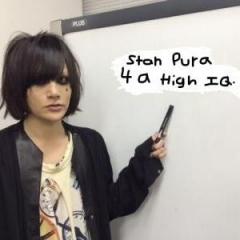
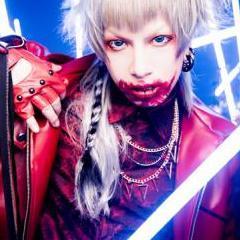
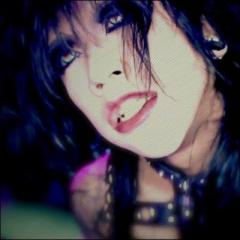
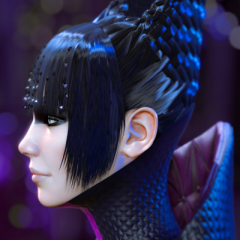
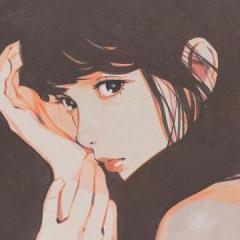

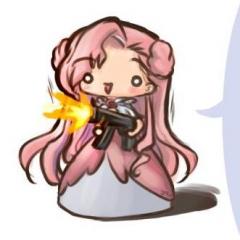

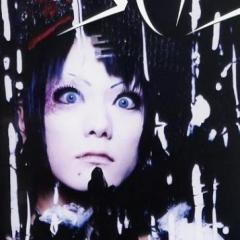
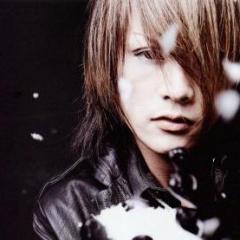
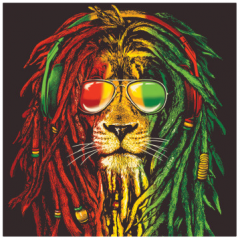
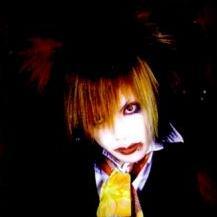
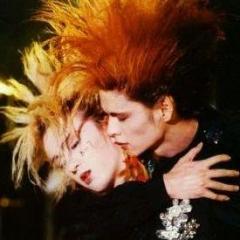
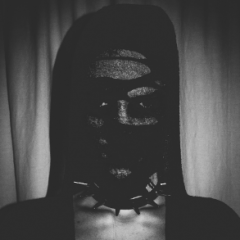
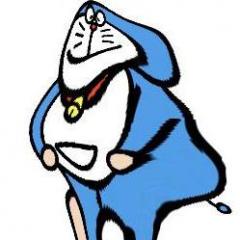
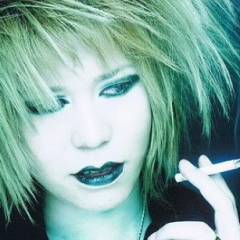
.thumb.jpg.f2de283ecacb331269507c3a23142df4.jpg)

